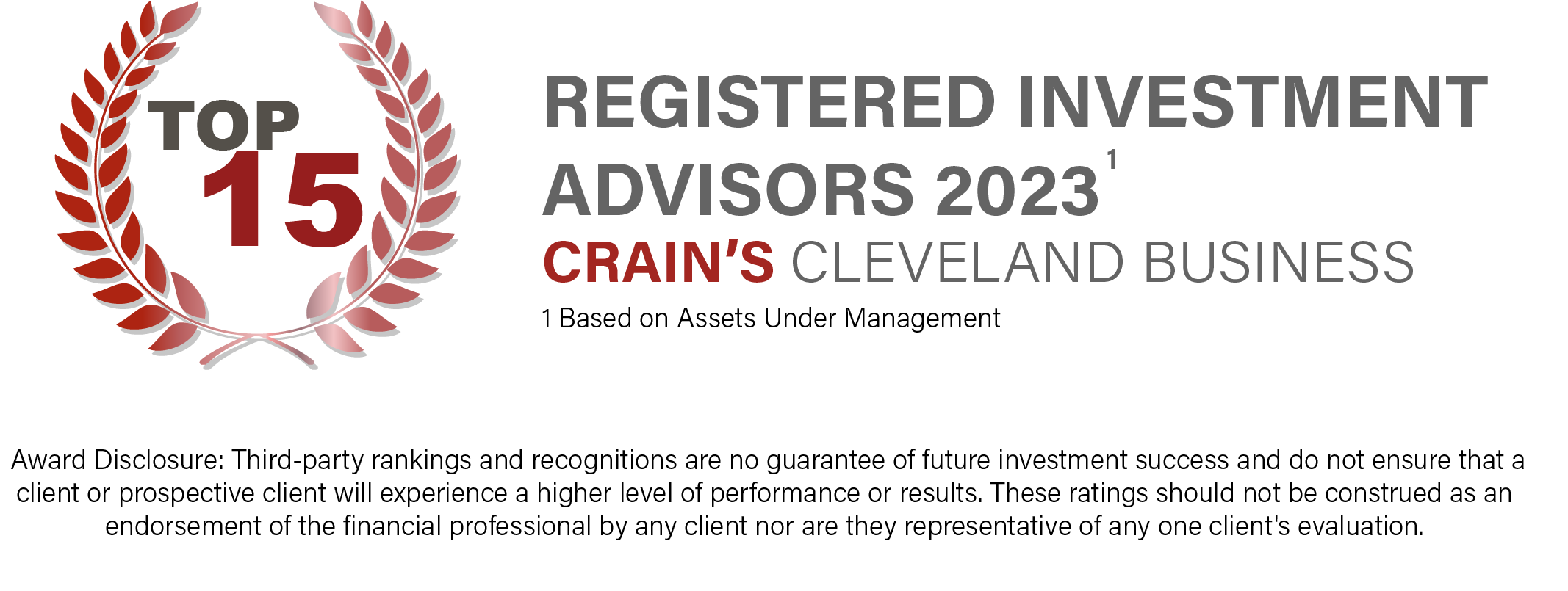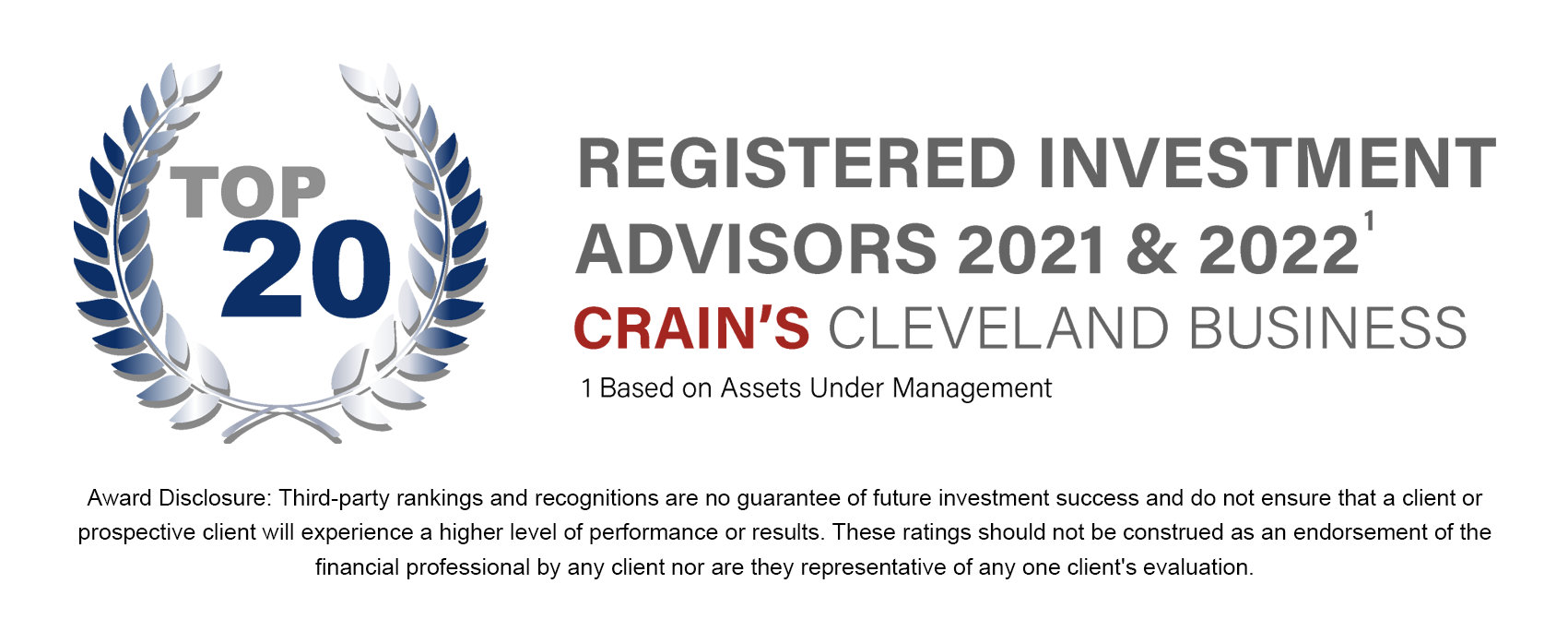Posted By Lineweaver Financial Group
March 07, 2024
Category: Healthcare, Retirement, Finance
If you're anything like most Americans, healthcare costs can be a big concern when you're planning for retirement. That's why it's essential to keep them in mind as you're getting ready for your golden years.
One common error we notice is people assuming their healthcare expenses will be covered by Medicare in retirement. The truth is, a single 65-year-old could need approximately $157,500 saved after tax to cover health care expenses in retirement, according to a report by Fidelity. And that number jumps to $315,000 for an average retired couple age 65.1
Those figures hinge on various factors such as your work duration, retirement timing and location, health condition, and life expectancy. Nonetheless, it could serve as a valuable target to strive towards.
Another common pitfall we notice is the consistent underestimation of the need and the costs associated with long-term care. Although the extent of long-term care required varies for everyone, data from the Administration on Aging paints a striking picture: at least 70% of individuals aged 65 or older today will inevitably find themselves in need of some level of care.
Every year, Americans are shelling out a whopping $475.1 billion for long-term care. Surprisingly, Medicaid only covers 42% of these costs. This means you'll probably be responsible for a significant portion of the bill, making it crucial to plan ahead.
Another important thing to note is Ohio's latest updates regarding
Posted By Lineweaver Financial Group
January 18, 2024
Category: Finance, Retirement, Planning
Navigating the financial landscape in retirement can be a daunting task. It's like trying to pass through a jungle of expenses – health care, taxes, and long-term care costs all taking a piece of the hard-earned nest egg you've been building for ages. And just when you think you've got it all figured out, here comes the rollercoaster of economic uncertainty.
In the face of such high stakes, it's no wonder the prospect of spending in retirement can be overwhelming. But with our team of financial professionals behind you, you can take steps to help you reclaim control and ease the anxiety associated with post-retirement expenditures.
Embarking on the journey toward retirement becomes much smoother when you proactively create a budget beforehand. This invaluable tool allows you to gauge your anticipated expenditures and income streams once the daily grind is behind you. It's crucial to take stock of the various income sources at your disposal, such as Social Security, pensions, and 401(k)s, while also factoring in inevitable expenses like taxes, health care, and long-term care.
When you're getting budget-savvy for retirement, start by figuring out what's a must-have and what you can let slide. Let's say you're dreaming of a retirement filled with jet-setting adventures. Well, that travel fund needs to be part of the grand budget plan.
And let's not forget the inevitable: taxes. It's a good idea to give taxes a special seat
Posted By Lineweaver Financial Group
January 04, 2024
Category: Resolutions, Finance, Goals, Taxes
We’ve been working with private and corporate clients for nearly 30 years. Every year at this time, we meet new clients who want to drastically overhaul their finances, and set themselves up for increased wealth in the New Year. We’ve put a list of 5 resolutions that we always share and that you can put to work for you, too.
Resolution No. 1
First things first. The base of any good financial plan is insurance because it helps you control risk. You can have the best financial plan in the world, but if something happens to you or your family, you need to be protected to keep your plan in solid footing.
You first want to take the time to make sure all your insurances are in proper order. This includes Life insurance, disability insurance, and even property and casualty. Because we specialize in working with retirees, long-term care is especially important to our clients. According to the U.S. Department of Health and Human Services, 70% of people aged 65 or older are likely to need long-term care at some point.
Finally, you may want to consider an umbrella policy, especially if you have rental or vacation homes.
Resolution No. 2
Your financial goals, both long and short term, should be driven by your personal goals – whether that’s providing for children and grandchildren, sending them to college, passing the family business to the next generation, or preparing for your own retirement and the traveling you want to do, you should
Posted By Lineweaver Financial Group
November 21, 2023
Category: Charity, Finance, Donation, Tax Strategies
The end of the year is the time when people are looking to show gratitude by donating to their favorite charities or special causes that are important to them.
But like any financial decision, you should take a moment to see if there are any tax benefits or strategies to consider that can maximize your giving efforts.
The first strategy to consider is a Donor Advised Fund. These have two main tax advantages. First, you become eligible for an income tax deduction of the full fair market value of the asset, up to 30% of your adjusted gross income (AGI) for gifted securities, and 60% of your AGI for cash. It also eliminates capital gains taxes on long-term appreciated assets if they’ve been held for longer than a year.
The second strategy that can help benefit a charity – as well as your own finances – is a Qualified Charitable Distribution or QCD. QCDs can be a great option for those 70 ½ or older and allows you to contribute money directly from your IRA to your preferred charity. You’re allowed to give up to $100,000/year.
The advantage is that this reduces your AGI, which affects things like Medicare, Social Security, and various other tax credits and deductions. It may even help you reduce your income taxes. It can also help you offset any additional income you have if you’re over age 72.
Another charitable deduction that’s available is the Ohio Scholarship tax credit. It’s a $750/person non-refundable credit you ca
Posted By Lineweaver Financial Group
November 02, 2023
Category: Finance, Market, Portfolio, Investments
Key Takeaways:
We are changing our allocations to slightly overweight U.S. quality stocks, seeking to capitalize on the recent market pullback and position for potential upside surprises in U.S. economic growth and corporate earnings.
We are leaning into U.S. high-quality stocks expressing a high-conviction preference for the largest cap stocks in the U.S. that appear to have attractive growth profiles.
We plan to decrease our exposure to Europe, moving underweight international Developed Market (DM) stocks due to weakening corporate earnings signals and more pronounced downside vulnerability to potential rising energy prices and geopolitical turmoil.
We are underweight bonds and overweight cash and short-term instruments that offer very attractive yields.
The ghost of September's past haunted markets once again in 2023 and has carried over. This notoriously weak seasonal period - combined with rising rates and declining liquidity - saw stock and bond prices press lower. The S&P 500 Index, for example, is off its late summer highs by almost 10%, and the Bloomberg U.S. Aggregate Bond Index is down a similar amount from its earlier highs. We are potentially facing an unprecedented third year in a row of bond market losses.
Overall, it has been a challenging year for investors with only the largest stocks doing well while most equity and fixed-income styles are flat to down. The “Magnificent 7” stocks in the S&P 500
Posted By Lineweaver Financial Group
September 21, 2023
Category: Finance, Cds, Bonds, Invest
Are you frustrated with your bank savings interest rates? We have a few options to get your money working harder for you.
When it comes to building a robust and diversified investment portfolio, there's more to consider than just individual equities and real estate. CDs and bonds are often overlooked but can be invaluable assets in any investor's toolbox, especially at today’s historically high rates.
Generally speaking, the S&P 500 return is 10% annually on average since 1957, according to Seeking Alpha1. But in a year with market uncertainty, constant volatility, and rising interest rates, a smaller return with reduced risk may be a preferable option to some. Because of elevated interest rates, there are both CDs and bonds that are paying in the 5.5%- 7.2% range2. And the Fed’s future path is uncertain – these rates may increase over time.
CDs are fixed instruments, so any rate increase won’t affect those you hold now. But you can stagger your purchases and build a CD ladder, which allows you to layer new CDs at increasing rates so that you may be able to benefit from rising interest rates.
This is possible because all CDs have a term – a fixed contract date – and different interest rates will be offered for different durations. CDs also have the advantage of being FDIC-insured up to $250,000.
That brings us to our other strategy, bonds. The FDIC insura
Posted By Lineweaver Financial Group
September 07, 2023
Category: Finance, Money, Dollar, Fitch, Rating
We have received questions recently regarding the U.S. Dollar and countries like Brazil, Russia, India, China and South Africa (BRICS) potentially developing alternative currencies and financial institutions. While we agree that the U.S. fiscal and monetary situation has deteriorated over recent years, and it is likely that China and Russia in particular are pushing to find alternatives to the U.S. Dollar and financial institutions, we do not view this as an imminent threat to the global economy or your investment portfolio.
The U.S. Dollar dominates global trade flows and we do not expect this to change in the near term. It’s estimated that the total value of global trade in 2022 was $32 trillion. The U.S. Dollar was 88% of those trades1. That is only down from 90% in 19881. Further, a reserve currency like the U.S. Dollar must be deep enough to support such large demand, be overseen by a country that can support large current account deficits, has a clear rule of law, does not impose capital controls, and supports property rights. To us, none of the BRICs demonstrate this resiliency. As such, we believe the U.S. Dollar remains the world’s reserve currency for the foreseeable future.
We think maintaining a diversified portfolio of U.S. and International stocks and bonds is the best defense against any potential actions by these countries, which is how we have invested your
Posted By Lineweaver Financial Group
August 24, 2023
Category: Finance, Wealthtrac, Analysis, Portfolio
We’re excited to share the arrival of our new product, the Lineweaver WealthTrac Analysis. This is a sophisticated tool that helps us not only evaluate your current and future financial goals but to also consider emotions and behavior in a way that helps set you up for success.
This is a powerful tool that evaluates your current and future financial plan in 5 different areas: Personal Information, Financial Information, Investment Goals, Risk Tolerance, and Risk Score.
It considers variables like your employment, career and income, your Social Security, what you want out of your retirement, what your current financial situation looks like, and much more. By doing this, it can give you a great analysis whether you’re still working or retired.
Wealth planning is always about establishing a goal and working toward it. To help client’s do this, we look at their top three financial goals. We measure where they are now, and what it would take to meet their timeline.
Part of those goals is looking at three time horizons and the strategies that are best matched with each. You must think about the short-term, middle-term, and long-term goals.
A truly innovative aspect of this program is how it lets us visualize how your risk tolerance and your emotional tolerance match up to the risk you’re actually taking, and the progress you’re making toward your goals.
Our sophisticated analyzer also goes even further and offers you a score b
Posted By Lineweaver Financial Group
July 13, 2023
Category: Finance, Tax, Inheritance, Trust, 529, IRA
For older Americans, leaving retirement savings to their grandchildren without also leaving them a big tax bill is becoming harder under new rules that took effect in 2020.
Previously, heirs other than spouses had decades to draw down inherited retirement accounts. After the rules change, now they must do it within 10 years.
To maximize their family’s after-tax wealth, grandparents are changing their estate plans and creating new trusts. The timing change also has grandparents making a series of Roth conversions or big generation-skipping lifetime gifts.
These choices make sense with the amount of money and taxes that are at play. According to the Investment Company Institute, Americans held $12.5 trillion in IRAs as of March 31, 2023 and 52% of households headed by someone 65 or older have one.
By choosing to leave a Roth IRA, you avoid some of the problems of the accelerated tax hit from an inherited traditional IRA since those can cause a big tax bill, especially if distributions fall during the heir’s highest earning years. Minor grandchildren may also need to file a tax return to report the IRA payouts, and the income could be taxed at the parents’ rate.
However, because of the 10-year payout period, there is a risk that your heirs will spend the money quickly.
Other options to consider when planning your legacy is to start making lifetime gifts to grandchildren as soon as they are born. That can look like pay
Posted By Lineweaver Financial Group
June 15, 2023
Category: Finance, Awards, Investment, Crains
Lineweaver Wealth Advisors is proud to announce that we have been named as one of the Top 15 Advisors in Cleveland by Crain’s Cleveland Business, moving up three spaces from 18 last year. We are humbled to have received this recognition and credit the hard-working team at LWA and the many clients that we have who put their trust in us.
According to the list, LWA is one of only 5 of the 25 on the list of Advisory services that grew over the last year. We do that in two ways. First, our goal is to make smart decisions with our client's money, which helps benefit them. And the second is that our clients, friends, and neighbors are constantly referring new clients to us. We want to help them be successful, so that it’s easy for our clients to say good things about us.
Our staff work hard and go the extra mile for our clients while adding a personal touch. People are sick of the phone tree and digital assistants where you’re the one that must answer questions when you have important questions you want to ask your advisor. Technology is important – we use it to help build and monitor our client’s customized portfolios. But, just as important is being able to talk directly to your advisor or a member of our service team if you need help.
We also believe everyone needs a Financial Quarterback –an experienced and knowledgeable advisor to coordinate the members of your team, and to help make sure your customized financial plan is consi
Posted By Lineweaver Financial Group
May 18, 2023
Category: Tax, Finance, 401k, Retirement
The idea of saving as much as possible during your career while making wise investments to have a comfortable retirement is nothing new for workers. But if you don’t consider a tax strategy with that plan, it can derail any retirement.
Many workers are able to get company stock either as part of their compensation or through the company’s 401(k) program and these are the stocks you want to pay attention to so you don’t lose money in taxes.
Typically, when people retire, they roll all of their 401(k) to an IRA and everything you paid for that company stock inside the 401(k) and all the appreciation through your working years will be taxed at your personal income rate when you take money out to supplement your retirement.
Instead, if you use the Net Unrealized Appreciation – or NUA – rules, you can roll the stock out of the 401(k) and pay ordinary income taxes only on the cost basis, or what you paid for the stock through the years. Then, if done correctly, you can have the appreciation of the stock taxed at the much lower capital gains rates. For most people, this could cut your tax bill almost in half.
For example, let’s say that you have $300,000 of company stock in your 401(k), that you paid $100,000 for. You roll the stock out of your 401(k) to a non-IRA account. You will pay taxes on the first $100,000 at your ordinary income rate, but the additional $200,000 would be taxed at your capital gain rate, which ca
Posted By Lineweaver Financial Group
May 04, 2023
Category: Postnuptial, Prenuptial, Agreements, Nuptial, Finance
Most people have heard of a prenup – or prenuptial – agreement, but a new law in Ohio will now allow for a postnuptial agreement.
A prenuptial agreement is an agreement a couple enters into before marriage describing how their assets will be divided on divorce or death. However, once you were married, you could not amend or terminate the prenuptial agreement or enter into any agreement regarding the division of assets.
Until now, all other states besides Ohio and Iowa allowed for an agreement after marriage to either amend the prenuptial agreement or have a whole new agreement describing how assets will be divided on divorce or death. But now that Senate Bill 210 has been signed into law, married couples in Ohio can go forward with a postnuptial agreement.
There are a couple of scenarios that a postnuptial agreement could lend itself to.
For example, at the beginning of a marriage, the husband and wife were about equal in finances and agreed in a prenuptial agreement that each would keep their own assets. Then they have three children and for twenty years the wife stays at home raising the family and the husband grows his business to be a very valuable asset. The wife might want some part of those assets since she lost the opportunity to grow her assets.
In that case, a postnuptial agreement could provide that she shares in some of the growth of the husband’s assets.
In another scenario, let’s say parents want to give a
Posted By Lineweaver Financial Group
January 25, 2023
Category: Finance, Markets, Bonds
COMMENTARY BY JERRY HERMAN, CFA®
As we sit in the darkest days of the solar year, we are encouraged to know that the days ahead will have more light – the days will be brighter. And for the financial markets we are optimistic that this will be true in the figurative sense as well. 2022 was a year of recognition and reality - recognition that the stimulus endeavors of prior periods needed to be unwound and the reality that the process could be painful. 2023 offers opportunities and optimism - opportunities being presented in sectors and asset classes that we haven’t seen for some time and the optimism that the Fed will get it right and avoid a deep recession, and global and domestic political and social tension will ease.
In 2022, the forces of pandemic-induced supply chain disruptions, exceptionally high consumer demand for goods such as housing, autos, and appliances, and services like travel and entertainment, combined with an energy shock brought on by the Russia-Ukraine conflict, drove inflation to its highest level in four decades! In June, the inflation rate hit 9.1% and averaged just over 7% for the year, more than double the historical average of about 3%. To combat inflation, the Fed increased interest rates seven times during the year to 4.25-4.5%, levels not seen since 2008.
The year was difficult for investors. Facing the headwinds of rising interest rates, a very tight labor market, and capacity and supply constraints in ma
Posted By Lineweaver Financial Group
January 25, 2023
Category: Resolutions, Finance, Goals, Coordination
By Jim Lineweaver, CFP®, AIF® President and Founder
It might not be so shocking to learn that many of us don’t stick to our New Year’s resolutions. In fact, according to a study conducted by the University of Scranton in Pennsylvania, only 8% of people achieved their New Year’s resolutions in 2021.
One problem that typically arises is that we set aspirational goals for ourselves instead of ones based on the reality of integrating them into our everyday activities. This can set us up for failure and create self-doubt in our abilities. Here’s a list of attainable resolutions I’ve put together to give you the confidence needed to stay true to your financial goals throughout the new year.
The first resolution that will help set a solid foundation to your financial plan is to set aside time to look at your insurance plans. You’ll want to make sure all your insurance is in proper order including life insurance, disability insurance and even property and casualty. Because we specialize in working with retirees, long-term care is of top priority to our clients. And if you have rental or vacation homes, you may want to consider an umbrella policy.
Another resolution is to establish your financial goals. Both long and short financial goals should be driven by your personal goals. That could look like sending your children or grandchildren to college, passing on the family business or having a retirement plan tha
Posted By Lineweaver Financial Group
January 13, 2023
Category: Second Opinion, Finance, Cosultation
People often question if they’re doing all they can to protect their portfolios from losses while taking advantage of buying opportunities. To help you gain more confidence in your financial well-being, it can be beneficial to get a second opinion. Even if you’re happy with your current plan, a second opinion can help pinpoint issues or call attention to parts that might be overlooked otherwise. Here are five reasons why it might be time to consider a second opinion.
All financial planners are different, and each offers different services and products. You need a planner who is truly independent and not forced to offer a limited selection of options to meet your goals and objectives. The advisor you want is one that can customize a solution for whatever your circumstances may be.
You’ll want to make sure your advisor is a fiduciary, which means that an advisor puts your needs and goals before their own. If you’re currently seeing an advisor that is not a fiduciary like ours, that may mean they’re not keeping your best interests in mind.
Make sure you’re working with someone with the proper credentials. Ideally, you’ll want to see a Certified Financial Planner (CFP) because they follow higher standards in terms of education and ethics. The best of both worlds would be an independent fiduciary who is a CFP. Then they’d have access to almost any strategy, product or security and have to put your inte
Posted By Lineweaver Financial Group
November 03, 2022
Category: Retirement, Certified Financial Planner, Finance
A question that comes around often is not only how much you should save for retirement, but how much you should spend in retirement.
When it comes to talking about how much to save, many times the rule of thumb is 10-15%. However, that assumes that you have saved that same amount for your entire career, and many of us haven’t.
Instead of just assuming a single savings rate, many financial advisors will suggest that you start by working backward. That means deciding when you want to retire and how much you’ll spend each year in retirement.
Once you set those targets, you can work backward to get the number you’ll need and then divide that by your remaining years and figure in market return. This will help you figure out how much you need to save.
While this is a valid strategy many advisors use, an issue that arises here is that situations change. If you do this in your 20s, 30s or 50s, your priorities can be completely different when you’re in your 60s. Working backward can work, but you may want to check that the plan you made 20 or 30 years ago will still appeal to you when it comes to the time of retirement.
When it comes to figuring out how much to spend in retirement, many investors and advisors use the 4% rule, which says you can take about 4% of your portfolio in distributions every year.
But as we’ve seen this year, inflation doesn’t always cooperate. If you don’t have strategies in your portfolio
Posted By Lineweaver Financial Group
October 03, 2022
Category: Market Update, Finance, Newsletter
Following the conclusion of its September meeting, The Federal Reserve (Fed) announced another “jumbo” interest rate hike of 0.75% and communicated that further interest rate increases will likely be appropriate in the coming months. The Federal Open Market Committee now projects its target interest rate to be raised an additional 1.00% to 1.25% by the end of 2022. Following this announcement stock markets declined, resulting in the S&P 500 index re-entering bear market territory (more than 20% below its January high).
In August’s inflation report, the Consumer Price Index rose 8.3% from a year ago, suggesting that inflation may prove higher and longer lasting than many previously believed. In response, Federal Reserve chairman Jay Powell reiterated that the Fed intends to continue raising interest rates, rather than prematurely pausing or pivoting as financial markets had hoped over the summer. From June lows to August highs, the S&P 500 index rallied nearly 19%. As you may recall, we took advantage of that run-up in equity markets to rebalance investment portfolios back in line with the asset allocation most appropriate to meet long-term investment objectives (for reference, asset allocation is the percent of a portfolio’s investments held in each major asset category, such as stocks, bonds, or other securities). We did this to manage risk as we entered what we felt may be a volatile fall.
Thus far, stock declines have occurred while corpor
Posted By Lineweaver Financial Group
October 03, 2022
Category: Finance, Commentary, Newsletter, School Tuition
Anticipation is swirling around the pending student loan forgiveness plan announced by the Biden Administration in late August.
The plan can cancel up to $10,000 in debt for eligible student loan borrowers who didn’t receive a Pell Grant. If a borrower is a Pell Grant recipient, they will be eligible for up to $20,000. To be eligible, you must be a student loan borrower with a federal student loan and earned up to $125,000 of annual income (or $250,000 as a joint filer) during the COVID-19 pandemic.
Here’s where the plan is so far:
An exact date for applying for loan forgiveness has not been set, but the U.S. Department of Education says to expect it by early October. The initial form will be available online, with a paper version available later.
The payment pause has been extended through the end of 2022, and another pause will not be coming. Interest will begin accruing again on January 1, 2023, and regular payments will resume. To receive loan forgiveness before the payment pause ends, the Department of Education recommends applying for relief before November 15.
Loan servicers will send a notification when relief has been applied to an account. Borrowers should see forgiveness applied to their loan balances within four to six weeks after submission of the application.
Note that borrowers with FFEL or Perkins loans not held by the Department of Education may not be able to obtain debt relief due to new guidance issued by the Depart
Posted By Lineweaver Financial Quarterback
July 08, 2022
Category: Commentary, Newsletter, Finance, Crain's
We are humbled and excited to share that we have been ranked in the top 20 of Crain’s Cleveland’s annual list of Registered Investment Advisors based on assets under management for the second year in a row. We were especially excited to move up on the list, after ranking in the top 25 in 2019 and 2020. While this is a great milestone and accomplishment for us, we know that there are really two reasons for it: a great staff, and client trust. Our staff work hard and go the extra mile for clients, and in turn clients trust us, use us as a valued sounding board, and introduce us to their family and friends. To us, there is no higher recognition.
We also believe in personal service. We know how frustrated people are with phone trees and digital assistants where they have to answer questions and are often transferred and re-routed. We live in a fast-paced world that requires cutting-edge technology and the latest market analysis to make smart, informed decisions for all our clients. But, when it comes to service, we believe in a personal touch. You’ll always speak with a person, and we pride ourselves on getting you answers to your questions in 24 hours or less.
For nearly 30 years, our team of qualified, experienced, and credentialed professionals has provided our private and corporate clients with a plethora of options for their financial needs. Our success lies in our continued commitment to providing clients with sound advice, world-class customer se
Posted By Lineweaver Financial Quarterback
July 08, 2022
Category: Finance, Commentary, Newsletter
By John Kunze, Vice President of The Brooks & Stafford Company
The real estate market has been crazy these last two years. Many of the home values in our area have increased 25% or more. The cost of building a new home has seen similar increases. There are many reasons, including a limited supply of homes for sale, lower interest rates, increased cost of building materials, shortage of skilled labor in the building trades, etc.
But, what if there was a terrible loss to my home? Do I have enough insurance? Is my home properly protected? Understanding your insurance policy will help you protect your home in the way that is best for you.
Homeowner’s policies use a Replacement Cost as the basis of coverage and claim valuation. Replacement cost is the cost to repair or replace the damage to your home without any deduction for age or depreciation, not the cost you could sell your home. Make sure your policy is Replacement Cost contract and not an Actual Cash Value policy. Your insurance agent or company should be able to help you determine a fairly accurate estimate of your home’s Replacement Value. Once that is determined, make sure your agent includes a provision that each year changes your Dwelling Limit to coincide with the change in the new building costs – many companies call that “Inflation Guard Protection”.
How do I protect against a huge increase in my home’s valuation during the policy





















 Virteom
Virteom